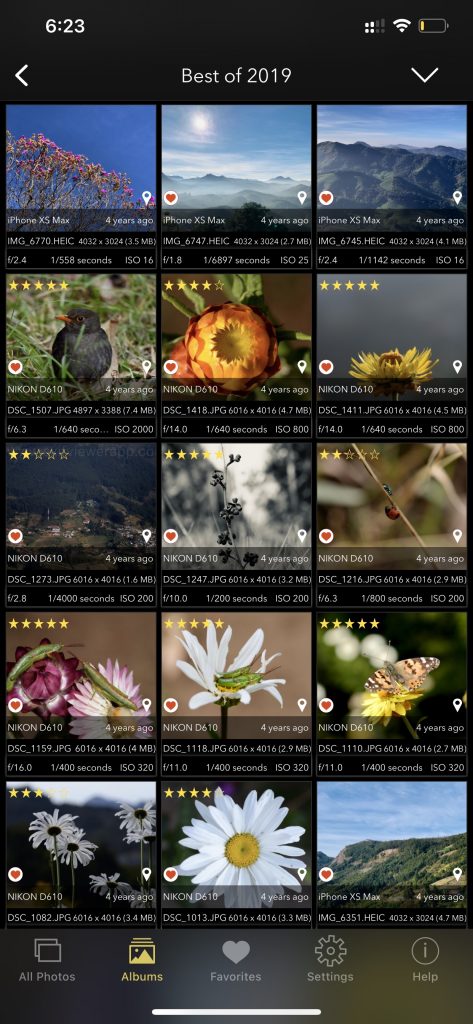When it comes to capturing memorable moments, your iPhone, with its increasingly advanced camera capabilities, has become an indispensable tool for photography enthusiasts. The convenience of having a high-quality camera in your pocket means that you can seize unexpected moments and transform them into enduring memories. With the right combination of technical know-how and artistic flair, you can turn seemingly ordinary snapshots into visually stunning and emotionally evocative pieces of art.Whether you’re just starting to explore the world of photography or you’ve already honed your skills over the years, the tips and techniques tailored for iPhone photography can undoubtedly enhance your creative process. These tips are designed to cater to a wide range of users, from those who are discovering the basics of composition and lighting to seasoned professionals who are looking to push the boundaries of what’s possible with their iPhone camera.
The beauty of these iPhone photography tips lies in their universal applicability. They are tailored to help any user, regardless of their proficiency level, to unlock the full potential of their iPhone camera and create images that resonate on a deeper level. Whether you aspire to share your experiences on social media or you’re aiming to build a professional portfolio, mastering these tips can significantly elevate the quality of your photography.By empowering users to harness the capabilities of their iPhone cameras effectively, these tips foster a sense of creativity, enabling individuals to capture the essence of a moment, the subtleties of emotions, and the intricacies of the surrounding world. With the right guidance, users can learn to play with light, composition, and perspective, transforming everyday scenes into compelling visual narratives that resonate with their audience.
Ultimately, the aim is to encourage users to see the world through a creative lens, to discover beauty in the mundane, and to communicate their unique perspectives through the powerful medium of iPhone photography. Whether it’s the play of light and shadow, the vivid hues of a sunset, or the candid expressions of loved ones, these tips can help users seize those fleeting moments and preserve them as timeless works of art.
Here are the 10 iPhone Photography Tips:
1. Master Lighting Techniques:
Mastering lighting techniques is pivotal in the realm of photography, and the same holds true for iPhone photography. The way light interacts with your subject can significantly impact the mood, tone, and overall quality of your photographs. Understanding the nuances of lighting can enable you to create images that are not only visually appealing but also emotionally engaging.
- Experiment with Natural Light: Experimenting with natural light is a fundamental aspect of honing your iPhone photography skills. Understand how natural light behaves at different times of the day and in various weather conditions. By observing how natural light behaves at different times of the day and in various weather conditions, you can learn to leverage its transformative power. From the soft, diffused light of early morning to the warm, dramatic hues of the golden hour, each lighting condition presents unique opportunities for capturing striking images that evoke different emotions and atmospheres.

- Utilize the golden hour: Capture photos during the golden hour, shortly after sunrise or before sunset, to benefit from its soft, warm, and diffused lighting for visually appealing images. The golden hour, specifically, offers a window of time shortly after sunrise or before sunset when the light is softer, warmer, and more diffused, casting long, captivating shadows and creating a captivating glow that can add a magical touch to your photographs. Harnessing the golden hour’s enchanting light can elevate your images, infusing them with a sense of warmth and depth that is hard to replicate during other times of the day.

- Incorporate shadows: Use shadows strategically to add depth and intrigue to your compositions, emphasizing shapes and textures within your frame. Furthermore, understanding how to play with shadows can add a layer of intrigue and dimension to your compositions. By strategically incorporating shadows, you can create visual interest, depth, and a sense of mystery that draws the viewer’s attention to specific elements within your frame. Shadows can help define shapes, emphasize textures, and contribute to the overall mood and narrative of your photographs.
- Adjust exposure: Utilize the iPhone’s exposure controls to balance the brightness of your photos, preventing overexposed highlights and excessively dark shadows. Leveraging the exposure and focus controls on your iPhone empowers you to fine-tune the lighting in your images. Adjusting the exposure allows you to control the brightness of your photo, ensuring that the highlights are not overexposed and the shadows are not too dark, thereby achieving a balanced and well-exposed image.
- Control focus: Leverage the iPhone’s focus controls to highlight specific elements within the frame, guiding the viewer’s gaze to key focal points of your composition. Using the focus controls enables you to highlight specific elements within the frame, emphasizing their importance and guiding the viewer’s gaze to the key focal points of your composition.

By mastering these lighting techniques and harnessing the capabilities of your iPhone’s exposure and focus controls, you can create photographs that not only capture the essence of the moment but also convey a compelling narrative through the interplay of light and shadow. The ability to manipulate lighting effectively can transform an ordinary scene into a visually captivating masterpiece, making your iPhone photography stand out and resonate with your audience on a profound level.
Checkout:
2. Use Third-Party Camera Apps:
While the default camera app on your iPhone is handy, consider exploring third-party apps that offer advanced features such as manual controls, RAW capture, additional filters and displays exif metadata. Apps like ProCamera, Halide, PhotoPills and Exif Viewer by Fluntro provide greater flexibility and control over your photography.
The native camera app on your iPhone is user-friendly and convenient, incorporating third-party apps into your photography toolkit can provide you with a broader range of creative possibilities and greater control over the capturing and editing process.
- Access to manual controls:These third-party apps, such as ProCamera, Halide, and Camera+, offer a diverse array of advanced features that cater to the needs of both amateur photographers and seasoned professionals. One of the primary benefits of using these apps is the access to manual controls, which empower you to adjust settings such as shutter speed, ISO, and white balance, giving you precise control over the technical aspects of your photography. This level of control is particularly valuable when you’re striving to capture specific moods or effects that require fine-tuning beyond what the default app can offer.
- Capture in RAW format: Additionally, the ability to capture images in RAW format through these third-party apps is a game-changer for photographers who prioritize post-processing and image manipulation. RAW files retain more data and provide greater flexibility during the editing process, allowing you to make significant adjustments to exposure, color, and detail without compromising image quality. This feature is especially beneficial for users who seek to achieve professional-grade results and maintain the highest level of image fidelity.
- Additional filters and editing tools: Enhance your creative options by applying various effects and adjustments directly within the app, allowing for the creation of unique visual styles that reflect your artistic vision. These filters can help you add artistic flair, adjust tones, and create unique visual styles that align with your creative vision. By leveraging these features, you can elevate your photographs, infusing them with a distinct aesthetic appeal that sets them apart from standard smartphone snapshots.
- Enable Metadata Options:”EXIF Viewer by Fluntro” is another powerful third-party app that can significantly enhance your iPhone photography experience. This app provides a comprehensive tool for viewing, analyzing, and extracting metadata from your photos, offering valuable insights into the technical details of each image you capture. Here’s why integrating the “EXIF Viewer by Fluntro” can be beneficial for your photography workflow:
- Detailed EXIF data analysis: Gain access to a wealth of information embedded within your images, including camera settings, aperture, focal length, exposure time, and more. This data can help you understand how specific shots were captured and provide valuable insights for refining your photography techniques.
- Location and geotagging information: View the geographical coordinates of where your photos were taken, allowing you to map out your photography journey and revisit specific locations for future creative endeavors.
- Image file management: Organize and manage your photos efficiently, with options to view, sort, and filter images based on various criteria, such as date, location, and camera settings.


Screenshot of EXIF Viewer App images showing 30+ exif metadata
By utilizing third-party camera apps such as ProCamera, Halide, PhotoPills and EXIF Viewer by Fluntro, you can unlock advanced features that expand your creative potential and provide you with greater flexibility and control over your iPhone photography, ultimately enabling you to produce high-quality, professional-looking images with ease. Whether you’re aiming for professional-grade shots, artistic compositions, or creative experimentation, integrating these apps into your workflow can revolutionize the way you approach iPhone photography, allowing you to achieve results that are not only visually striking but also artistically fulfilling.
Checkout:
3. Optimize Composition:
Implement the rule of thirds, leading lines, and symmetry to compose visually appealing photographs. Experiment with different angles and perspectives to add a unique touch to your images. Utilize gridlines on your iPhone’s camera app to maintain a balanced composition. Optimizing composition is a fundamental aspect of creating visually appealing and engaging photographs. By incorporating various compositional techniques, you can effectively guide the viewer’s eye, create a sense of balance, and convey your intended message or story.
Here’s a detailed elaboration of the key elements to consider when optimizing composition for your iPhone photography:
- Rule of thirds: Implementing the rule of thirds is a classic technique that involves dividing the frame into a 3×3 grid, creating nine equal parts. By placing key elements of your composition along these gridlines or at their intersections, you can achieve a visually balanced and aesthetically pleasing image. This technique helps draw the viewer’s attention to the most critical aspects of your photograph, creating a sense of harmony and visual interest.

- Leading lines: Incorporating leading lines is another effective method for guiding the viewer’s gaze and creating a sense of depth and perspective within your images. By using natural or man-made lines such as roads, paths, or architectural features, you can direct the viewer’s attention toward the main subject or focal point of your photograph, thereby creating a dynamic and engaging visual narrative.

- Symmetry: Utilizing symmetry in your compositions can evoke a sense of balance, order, and harmony. Whether you’re capturing reflections on a still body of water, architectural symmetry, or natural symmetrical elements, incorporating symmetrical compositions can create a visually impactful and aesthetically pleasing image. Symmetry can help draw the viewer’s attention to the center of the frame and evoke a sense of visual stability and elegance.

- Experiment with angles and perspectives: Capture unique viewpoints and unconventional framings to add a distinctive and creative touch to your photographs. Experimenting with different angles and perspectives allows you to capture unique and intriguing viewpoints that may not be immediately apparent to the naked eye. By exploring various vantage points, such as high-angle shots, low-angle shots, or unconventional framing, you can add a distinctive and creative touch to your photographs, creating a sense of dynamism and visual interest that sets your images apart.

- Utilize gridlines: Utilizing the gridlines feature within your iPhone’s camera app helps maintain a balanced composition and ensures that key elements are aligned appropriately within the frame. The gridlines serve as a visual guide, enabling you to position your subjects strategically and create a well-composed image that adheres to the principles of balance and proportion.


By considering these key elements, you can enhance the visual appeal and narrative impact of your iPhone photography, creating images that are visually striking, artistically compelling, and emotionally engaging.
4. Experiment with Different Modes:
Explore the various shooting modes available on your iPhone, including portrait, panorama, and time-lapse. Each mode serves a specific purpose and can help you capture diverse subjects in creative ways. Familiarize yourself with these modes to expand your photography repertoire.
Experimenting with different shooting modes on your iPhone can significantly broaden your creative horizons and enable you to capture a diverse range of subjects in unique and engaging ways. Each shooting mode serves a specific purpose and offers distinct capabilities that can be leveraged to create captivating and dynamic photographs.
Here’s a comprehensive elaboration on how to make the most of the various shooting modes available on your iPhone:
- Portrait mode: Capture professional-looking portraits with a beautifully blurred background (bokeh effect) that emphasizes the subject. The portrait mode is designed to capture stunning, professional-looking portraits with a beautifully blurred background, also known as the bokeh effect. By using this mode, you can emphasize your subject while creating a pleasing separation between the foreground and background, resulting in visually striking and aesthetically appealing portraits. Experimenting with portrait mode allows you to capture the essence and personality of your subjects while adding a professional touch to your photography.

- Panorama mode: Stitch together multiple images to create wide, immersive shots of expansive landscapes or cityscapes. The panorama mode enables you to capture wide, expansive landscapes or cityscapes by stitching together multiple images seamlessly. By panning your iPhone across the scene, you can create immersive panoramic shots that showcase the grandeur and scale of the environment. Panorama mode is particularly useful for capturing breathtaking vistas, architectural marvels, and sweeping natural landscapes, allowing you to convey a sense of space and perspective within a single frame.

- Time-lapse mode: Condense extended periods into short, captivating videos to showcase the passage of time and dynamic motion in a visually engaging manner. The time-lapse mode is ideal for capturing the passage of time and dynamic motion in a visually compelling manner. By condensing extended periods into short, captivating videos, you can showcase the subtle nuances of movement, change, and transformation within your surroundings. Time-lapse mode is well-suited for capturing the movement of clouds, the transition of day into night, bustling city streets, and various other time-dependent phenomena, enabling you to create visually engaging and evocative narratives.
By exploring and familiarizing yourself with these diverse shooting modes, you can expand your photography repertoire and effectively capture a wide range of subjects and scenes with your iPhone, creating visually stunning and dynamic images that leave a lasting impression.
5. Enhance Editing Skills:
Adjust exposure, contrast, saturation, and sharpness to achieve the desired effect. Avoid excessive filters and edits that can compromise the natural appeal of your images. Enhancing your editing skills is essential for bringing out the best in your iPhone photographs. Leveraging powerful editing tools available in popular apps such as Snapseed, VSCO, and Adobe Lightroom can help you refine and perfect your images, ensuring that they truly reflect your creative vision.
Here’s an elaborate guide on how to maximize these editing tools and achieve stunning results:
- Adjust exposure: Fine-tune brightness and darkness levels to achieve a well-balanced composition that highlights essential details. Make precise adjustments to exposure, ensuring that the brightness and darkness levels are balanced for optimal image quality. By carefully fine-tuning the exposure, you can highlight essential details and create a well-balanced composition that captures the viewer’s attention.
- Control contrast: Enhance depth and definition by adjusting contrast levels to bring out the subtleties of light and shadow. Control contrast levels to add depth and definition to your images. Adjusting the contrast can help bring out the subtle nuances of light and shadow, emphasizing textures and creating a more visually dynamic and engaging photograph.
- Fine-tune saturation: Adjust saturation levels to create vibrant and lifelike colors that accurately represent the captured scene. Fine-tune saturation levels to achieve vibrant and lifelike colors that accurately represent the scene you captured. By adjusting the saturation, you can enhance the richness and intensity of hues, creating a more immersive and captivating visual experience for the viewer.
- Refine sharpness: Ensure that critical details are crisp and well-defined by refining the sharpness of your images. Refine the sharpness of your images to ensure that essential details are crisp and well-defined. Adjusting the sharpness can help improve the overall clarity and quality of your photographs, resulting in images that are sharp, detailed, and visually appealing.
- Preserve natural appeal: Avoid excessive filters or edits that compromise the authenticity of your images, maintaining the genuine essence of the captured moment. While editing, it’s crucial to maintain the natural appeal of your images and avoid excessive filters or edits that can compromise their authenticity. Strive for a balance between enhancing the visual elements and preserving the inherent essence and integrity of the scene you captured. By exercising restraint and applying edits judiciously, you can ensure that your photographs remain true to the original moment and evoke a genuine emotional response from your audience.
By mastering these editing techniques and using apps such as Snapseed, VSCO, and Adobe Lightroom, you can elevate the visual impact of your iPhone photographs, creating images that are not only visually stunning but also artistically refined and emotionally compelling.
6. Utilize iPhone Accessories:
Invest in quality accessories such as external lenses, tripods, and stabilizers to enhance your shooting capabilities. These tools can improve image quality, stability, and enable you to experiment with various photography styles, including macro, telephoto, and wide-angle shots.
Utilizing iPhone accessories can significantly elevate your photography game by expanding your shooting capabilities and enabling you to capture high-quality images in various conditions and settings. Investing in quality accessories such as external lenses, tripods, and stabilizers can enhance your creative possibilities and help you achieve professional-level results.
Here’s a detailed elaboration on the benefits of each accessory:
- External lenses: Adding external lenses to your iPhone can enable you to experiment with different photography styles, including macro, telephoto, and wide-angle shots. Macro lenses allow you to capture intricate details and textures with exceptional clarity, while telephoto lenses enable you to zoom in on distant subjects without compromising image quality. Wide-angle lenses are perfect for capturing expansive landscapes and group shots, allowing you to fit more into the frame and create visually dynamic compositions.
- Tripods: Using a tripod provides stability and eliminates camera shake, especially in low-light conditions or when capturing long-exposure shots. A tripod helps ensure that your images are sharp and well-focused, allowing you to experiment with various framing and composition techniques without the risk of blurriness or distortion. Additionally, a tripod enables you to take self-portraits or group photos effortlessly, making it an essential tool for both solo and collaborative photography projects.
- Stabilizers: Stabilizers, such as gimbals or stabilizing rigs, are ideal for capturing smooth, steady footage and eliminating unwanted camera movements when shooting videos. These accessories help you achieve professional-grade video quality, whether you’re recording action sequences, vlogs, or cinematic shots. Stabilizers allow for fluid camera movements, ensuring that your videos are visually compelling and free from any distracting jitters or shakes.
By incorporating these high-quality iPhone accessories into your photography toolkit, you can push the boundaries of your creative potential and capture images and videos that are not only visually stunning but also technically refined. These accessories enable you to explore new photography styles, experiment with diverse shooting techniques, and achieve professional-level results, empowering you to express your creativity and tell captivating visual stories through your iPhone lens.
Checkout:
7. Capture Candid Moments:
Embrace spontaneity and capture authentic emotions by taking candid shots. Focus on capturing genuine expressions, interactions, and moments that reflect the essence of your subject. Capturing candid moments is an art form that allows you to preserve authentic emotions, genuine interactions, and unscripted instances that reflect the true essence of your subjects. Candid photography goes beyond staged poses and artificial expressions, creating a storytelling element that evokes a sense of immediacy, intimacy, and raw human connection.
Here’s a comprehensive elaboration on how to master the art of capturing candid moments:
- Embrace spontaneity: Embrace the unpredictability of the moment and be ready to capture unguarded instances that unfold naturally. Anticipate genuine emotions, reactions, and gestures, and be prepared to capture these fleeting moments as they occur, without interfering or interrupting the flow of the scene. By embracing spontaneity, you can encapsulate the authenticity of the moment and preserve it in a timeless photograph.
- Observe and anticipate: Develop a keen eye for observing subtle interactions, expressions, and gestures that convey genuine emotions and tell a compelling story. Anticipate the decisive moment, the instance when all elements align perfectly to encapsulate the essence of the scene. Pay attention to details, nuances, and non-verbal cues that reveal the true character and personality of your subjects, allowing you to capture moments that resonate with authenticity and emotional depth.
- Create a comfortable environment: Foster a relaxed and comfortable atmosphere to encourage your subjects to express themselves naturally. Establish a rapport and build trust with your subjects, allowing them to feel at ease and be themselves in front of the camera. By creating a conducive environment for genuine interactions and emotions to unfold, you can capture candid moments that are sincere, heartfelt, and deeply personal.
- Tell a compelling story: Focus on capturing moments that convey a narrative and evoke a sense of connection and empathy with your audience. Look for instances that reflect the relationships, emotions, and experiences shared by your subjects, enabling you to craft a visual story that resonates with authenticity and relatability.
By capturing candid moments that reveal the essence of human experiences, you can create photographs that transcend mere images, becoming powerful storytelling tools that evoke empathy, understanding, and a shared sense of humanity.
8. Focus on Subject Details:
Pay attention to intricate details and textures that add character to your photographs. Focusing on subject details is an essential aspect of photography that allows you to capture the intricacies, textures, and nuances that add depth and character to your images. Whether you’re photographing nature, architecture, or people, paying attention to specific details can elevate your photographs, creating visually captivating and storytelling images that resonate with your audience.
Here’s an elaborate guide on how to effectively focus on subject details:
- Observe with intention: Cultivate a sense of mindful observation and approach your subject with a keen eye for detail. Take the time to study the intricacies and unique characteristics that define your subject, whether it’s the delicate patterns of a flower petal, the weathered textures of an old building, or the subtle expressions on a person’s face. By observing with intention, you can uncover the hidden beauty within the details and capture them in a way that evokes a sense of wonder and appreciation.
- Highlight textures and patterns: Emphasize the textures, patterns, and surfaces that add visual interest and tactile appeal to your photographs. Whether it’s the rough grain of a wooden surface, the intricate lines of a leaf, or the interplay of light and shadow on a textured wall, highlighting these details can create a sensory experience for the viewer, allowing them to connect with the photograph on a deeper, more intimate level.
- Emphasize unique characteristics: Focus on the unique characteristics and defining features that set your subject apart and contribute to its individuality and charm. Whether it’s the vibrant colors of a natural landscape, the intricate designs of architectural elements, or the expressive features of a human face, highlighting these distinct qualities can add a sense of personality and narrative to your photographs, allowing them to resonate with your audience on an emotional and personal level.
- Convey a narrative: Use the details within your photographs to convey a compelling narrative or evoke a specific mood or atmosphere. Whether you’re aiming to evoke a sense of nostalgia, convey a sense of mystery, or capture a moment of introspection, leveraging subject details can help you craft a visual story that transcends the image itself, allowing your audience to immerse themselves in the narrative and engage with the photograph on a deeper, more profound level.
By focusing on subject details and incorporating them into your photographic compositions, you can create images that are not only visually striking but also rich in narrative depth and emotional resonance. Through the power of intricate details, you can invite your audience to explore the beauty and complexity of the world around them, fostering a sense of connection and appreciation for the subtle wonders that often go unnoticed.
9. Experiment with Perspectives:
Challenge traditional perspectives by experimenting with unconventional angles and framing techniques. Capture high-angle shots, low-angle shots, and aerial perspectives to add a unique and engaging dimension to your photography portfolio. Push the boundaries to create visually striking compositions.Experimenting with perspectives is a powerful technique that allows you to challenge conventional norms and create visually dynamic and engaging compositions. By exploring unconventional angles, framing techniques, and perspectives, you can add a unique and refreshing dimension to your photography portfolio.
Here’s a comprehensive guide on how to effectively experiment with perspectives to create visually striking compositions:
- Capture high-angle shots: Shooting from a high vantage point can provide a unique bird’s-eye view of your subject and its surroundings. High-angle shots are ideal for showcasing patterns, textures, and spatial relationships from an elevated perspective, allowing you to create images that offer a fresh and intriguing interpretation of familiar scenes.
- Explore low-angle shots: Embrace a ground-level perspective by capturing images from a low vantage point. Low-angle shots can add a sense of drama, grandeur, and scale to your photographs, especially when photographing subjects with imposing or towering structures. By shooting from a lower viewpoint, you can emphasize the dominance and majesty of your subject, creating a visually impactful and immersive experience for your audience.
- Experiment with aerial perspectives: Utilize drone photography or aerial platforms to capture breathtaking views from above. Aerial perspectives offer a unique and expansive outlook that can transform ordinary landscapes into mesmerizing, abstract patterns and forms. By exploring the world from an aerial viewpoint, you can capture sweeping vistas, intricate geometries, and awe-inspiring natural landscapes, creating images that evoke a sense of wonder and appreciation for the world from a new and captivating perspective.
- Push the boundaries of framing: Experiment with unconventional framing techniques to add a creative and artistic touch to your compositions. Incorporate elements such as framing within framing, negative space, or asymmetrical compositions to create visually dynamic and thought-provoking images. By pushing the boundaries of traditional framing, you can infuse your photographs with a sense of creativity and innovation, inviting your audience to explore and interpret the scene from a fresh and captivating perspective.
By actively experimenting with perspectives and embracing unconventional angles and framing techniques, you can infuse your photography with a sense of creativity, dynamism, and visual intrigue. Through the exploration of diverse viewpoints, you can create images that transcend traditional boundaries, inviting your audience to engage with your photographs on a deeper, more immersive, and emotionally resonant level.
10. Practice Consistently:
Mastering the art of iPhone photography takes practice and patience. Dedicate time to regularly experiment with different techniques, explore new subjects, and refine your skills. Embrace failures as learning opportunities and persistently strive to improve your craft.
Practicing consistently is a fundamental aspect of mastering the art of iPhone photography. It is an ongoing journey that requires dedication, patience, and a willingness to explore and refine your skills continually. Here’s a comprehensive guide on how to effectively practice and improve your iPhone photography:
- Dedicate regular practice time: Set aside dedicated time to hone your skills and experiment with different techniques. Establishing a consistent practice routine allows you to build a strong foundation and develop a deeper understanding of the principles and nuances of photography. Whether it’s a daily practice session or a weekly photography outing, committing to regular practice cultivates discipline and helps you progress steadily in your photographic journey.
- Explore diverse subjects: Challenge yourself to explore a wide range of subjects and photography genres. Experimenting with diverse subjects allows you to expand your creative horizons and develop a versatile photography portfolio. Whether you’re capturing landscapes, portraits, still life, or street photography, embracing diverse subjects fosters a holistic understanding of composition, lighting, and storytelling, enabling you to refine your skills across different contexts.
- Embrace failures as learning opportunities: View setbacks and challenges as valuable learning experiences that contribute to your growth as a photographer. Embracing failures with a positive mindset allows you to identify areas for improvement and encourages you to explore alternative approaches and techniques. Learning from your mistakes and using them as stepping stones for progress is an integral part of the learning process and can ultimately lead to significant breakthroughs in your photography journey.
- Persistently strive for improvement: Cultivate a mindset of continuous improvement and strive to refine your craft with each new photograph you capture. Embrace a growth-oriented approach that encourages you to push your creative boundaries, experiment with new ideas, and seek constructive feedback from peers and mentors. By persistently striving for improvement, you can elevate the quality of your work and develop a distinctive photographic style that reflects your unique vision and artistic sensibilities.
By dedicating yourself to consistent practice, embracing diverse subjects, learning from failures, and persistently striving for improvement, you can nurture your passion for iPhone photography and evolve into a skilled and accomplished photographer. With each photograph you capture, you have the opportunity to refine your skills, express your creativity, and share your unique perspective with the world.
By implementing these iPhone photography tips into your creative process, you can capture breathtaking images that resonate with your audience. Embrace experimentation, continuous learning, and a passion for storytelling to unlock the full potential of your iPhone camera and elevate your photography journey.
Remember, the key to exceptional photography lies in your ability to blend technical expertise with artistic vision. Start implementing these tips today and embark on a fulfilling photography adventure with your iPhone.
Get some information about the images you took using Camera:
MEET THE EXIF VIEWER BY FLUNTRO FOR IPHONE PHOTOGRAPHY
Featured App on U.S and Canada AppStore. The EXIF Viewer app by Fluntro is like a helpful guide for your photos. It takes all the tricky information about where and when your photos were taken and makes it easy to understand. You can use it to find out where you took a particular photo and when. It’s like having a personal photo detective in your pocket!
Appstore Link: – https://apps.apple.com/us/app/exif-viewer-by-fluntro/id944118456
- View EXIF Data: Quickly access the EXIF tags of your Photos and Videos, providing essential information about camera settings, location data, and more.
- Remove EXIF Data: Safeguard your privacy by easily removing EXIF metadata before sharing Photos and Videos on social media or other platforms.
- Edit EXIF Data: Modify incorrect details like date and time, ensuring accurate image information.
- Geolocation Details: Instantly view, remove and edit Geotagging – GPS location, GPS coordinates, altitude, and direction with advanced features.
- iOS and iCloud Integration: Access EXIF metadata across your iOS devices and iCloud seamlessly.
- Photo EXIF Tags: Discover essential EXIF data, including ISO, Shutter Speed, Focal Length, Camera Model, lens model, Aperture, Photo Keywords and more.
- Image Details: Access information such as image DPI, height, and width on your iPhone and iPad.
- High-Resolution Image Viewing: Seamlessly zoom in on high-resolution photos of up to 80 MB with exceptional clarity.
- Date Format Options: Customize date formats to your liking for a convenient viewing experience.
- Privacy Control: Effortlessly conceal photos without EXIF metadata for enhanced privacy.
- EXIF Viewer Photos Extension: Access EXIF data directly from the native Photos app or other third-party apps.
- Flexible Sharing: Easily share images with options to include or exclude EXIF metadata.
- Copy to Clipboard: Copy EXIF data to the clipboard for convenient sharing across multiple applications.
- Metadata Retention: Learn how the app retains EXIF metadata while sending photos through Mail, AirDrop, and other sharing methods.
To Download App:
- Visit the App Store on your iPhone or iPad.
- Search for “EXIF viewer by Fluntro“.
- Download and install the app. EXIF Viewer app allows you to View, Remove and Edit image and video metadata.
Checkout the preview video of Exif Viewer by Fluntro: